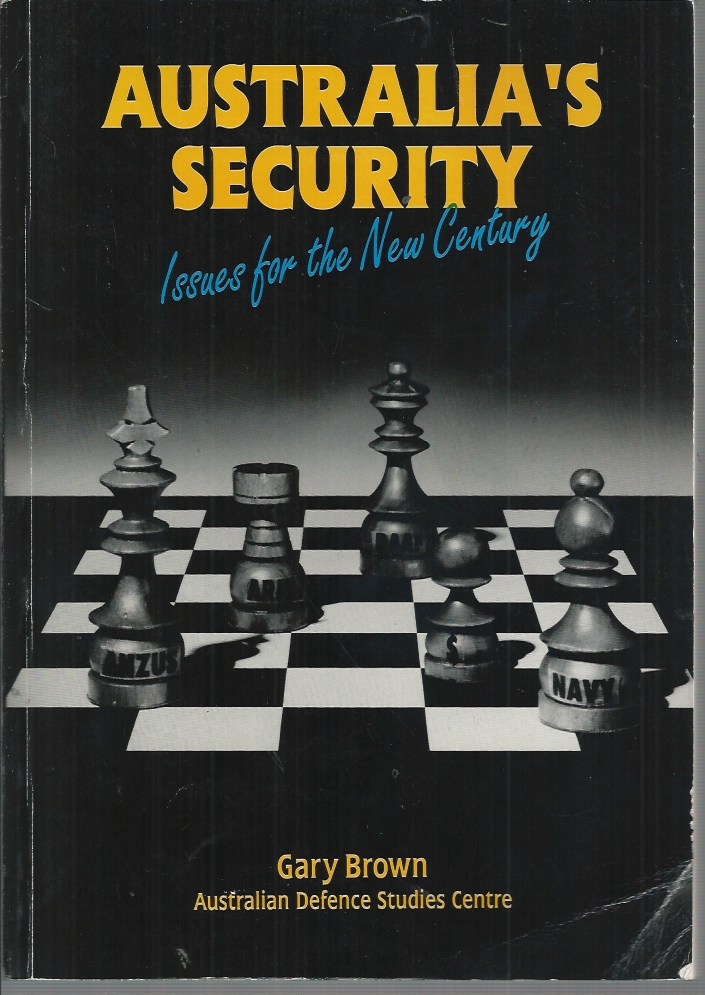AUSTRALIAN MILITARY
- xv, 231 p. ; 25 cm. #310823 Includes bibliographical references (p. 223-231)
- 1. The strategic revolution and its implications
- The fall of the old world order and its effects
- Shifting structure of the Asia-Pacific region
- Australia’s misjudgment of the collapse
- Australia’s strategic choices
- The nature of Australia’s strategic environment
- More heat than light?
- Control versus denial
- Getting the strategic context right
- 2. Japan: the new hub of Asia
- The postwar evolution of Japanese military power
- Limited capability of the self-defense forces
- Role of the self-defense forces
- Japan’s strategic situation
- The new strategic uncertainty
- Rearmament: pressures and obstacles
- TIs rearmament inevitable?
- The American-Japanese alliance
- ‘Division of labour’: a Pacific partnership?
- International perceptions of Japan
- The credibility of Japanese government
- Democracy and corruption
- Legacy of the ‘Greater East Asia War’
- Australian and regional perceptions
- Japan’s future international role
- Japanese peacekeeeping deployments
- A low-risk UN option for Japan
- Japan and its neighbours
- 3. Self-reliance or self-delusion?
- Warstocks and stockholding
- Defence industry: the fatal flaw in self-reliance
- The Collins submarine project
- the ANZAC frigates
- The defence exports strategy
- A record of failure
- Can defence exports be revived?
- Export data and guidelines
- Self-reliance: the unattainable goal
- 4. The decay of Australia’s American alliance
- Declining American regional power
- Diverging Australian and American interests
- Dangerous dependence
- The American facilities and intelligence
- Australian access versus Australian influence
- The future of the alliance
- 5. How much is enough? funding defence
- The democractic political context
- The decreased politican significance of defence
- Failure to meet defence funding commitments
- The need to improve defence funding management
- Restricted scrutiny of the defence budget
- The supplementation syndrome
- An appropriate level of security
- The threat context
- Realism in objectives
- Good money after bad?
- Defining a practice defence funding objective
- 6. Organising for security and defence
- Lack of a national security approach
- The ‘national security’ concept
- Reviving the national security machinery
- An Australian national security staff
- The higher defence organisation
- Issues in the integrated Defence Department
- The Utz review of 1982-83
- Fine-tuning the diarchy?
- A single chief executive officer for defence?
- The failure of strategic assessment
- 7. Security issues into the new century
- The obsolescence of Australian policy
- The failing alliance
- The delusion of self-reliance
- setting achievable security goals
- Minimised-risk defence
- Diversification
- Practical denial
- Security organisation and defence management
- How much is practicable?
- Regional engagement
- Confusing signals
- Practical regional military posture
- Engagement with Japan
- Human rights and security
- Policy issues for the next century
- annex A. Japanese defence spending trends 1955-1992
- annex B. US ‘bottom-up’ review: force reductions
- annex C. Patterns of Australian defence spending
- annex D. Security policy inquiry: terms of reference
- National security — Australia
- Australia — Military policy
- Australia — Defenses
- Australia — Military relations — Southeast Asia
- Australia — Military relations — United States
